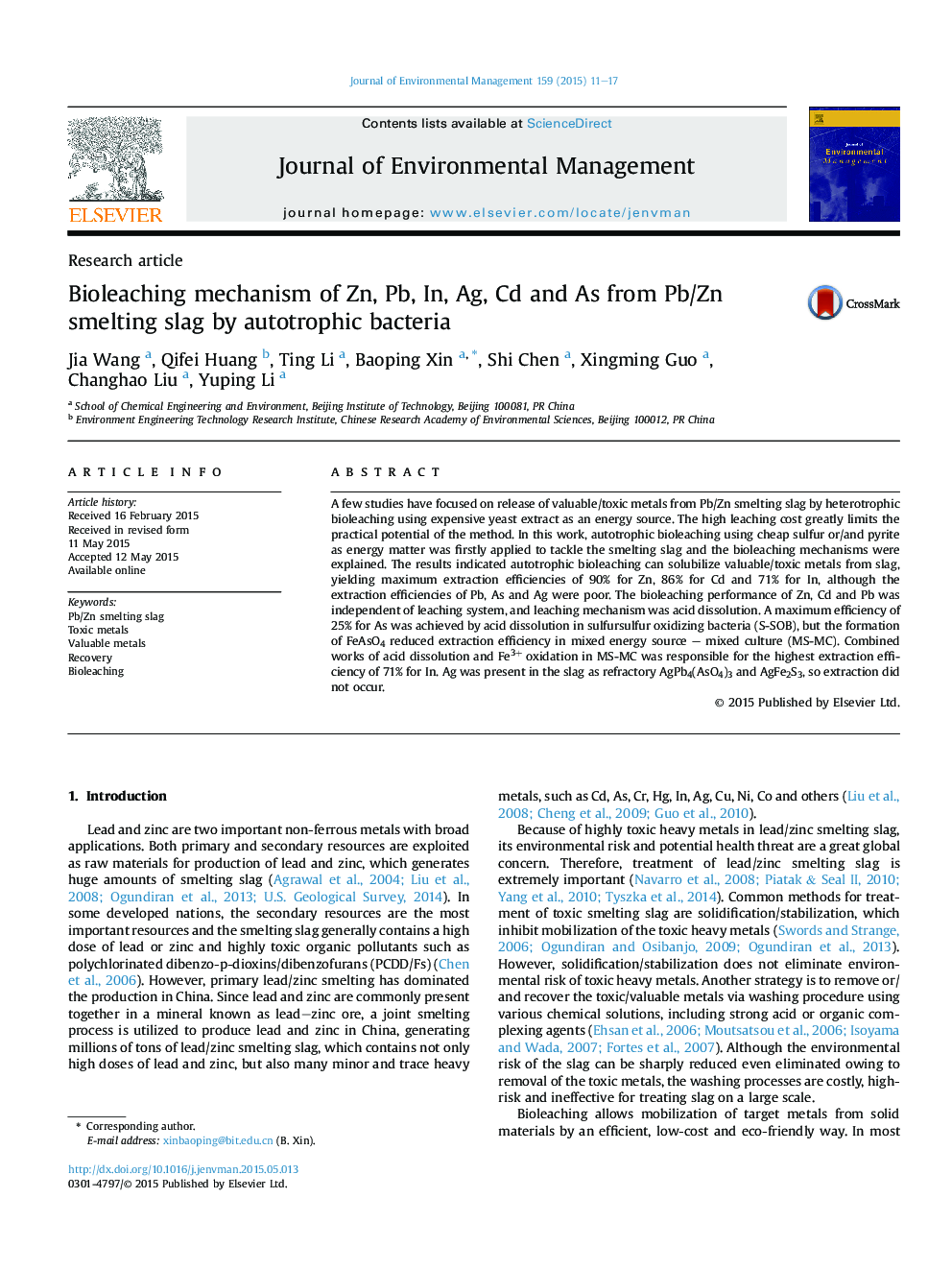| Article ID | Journal | Published Year | Pages | File Type |
|---|---|---|---|---|
| 7481950 | Journal of Environmental Management | 2015 | 7 Pages |
Abstract
A few studies have focused on release of valuable/toxic metals from Pb/Zn smelting slag by heterotrophic bioleaching using expensive yeast extract as an energy source. The high leaching cost greatly limits the practical potential of the method. In this work, autotrophic bioleaching using cheap sulfur or/and pyrite as energy matter was firstly applied to tackle the smelting slag and the bioleaching mechanisms were explained. The results indicated autotrophic bioleaching can solubilize valuable/toxic metals from slag, yielding maximum extraction efficiencies of 90% for Zn, 86% for Cd and 71% for In, although the extraction efficiencies of Pb, As and Ag were poor. The bioleaching performance of Zn, Cd and Pb was independent of leaching system, and leaching mechanism was acid dissolution. A maximum efficiency of 25% for As was achieved by acid dissolution in sulfursulfur oxidizing bacteria (S-SOB), but the formation of FeAsO4 reduced extraction efficiency in mixed energy source - mixed culture (MS-MC). Combined works of acid dissolution and Fe3+ oxidation in MS-MC was responsible for the highest extraction efficiency of 71% for In. Ag was present in the slag as refractory AgPb4(AsO4)3 and AgFe2S3, so extraction did not occur.
Related Topics
Physical Sciences and Engineering
Energy
Renewable Energy, Sustainability and the Environment
Authors
Jia Wang, Qifei Huang, Ting Li, Baoping Xin, Shi Chen, Xingming Guo, Changhao Liu, Yuping Li,
